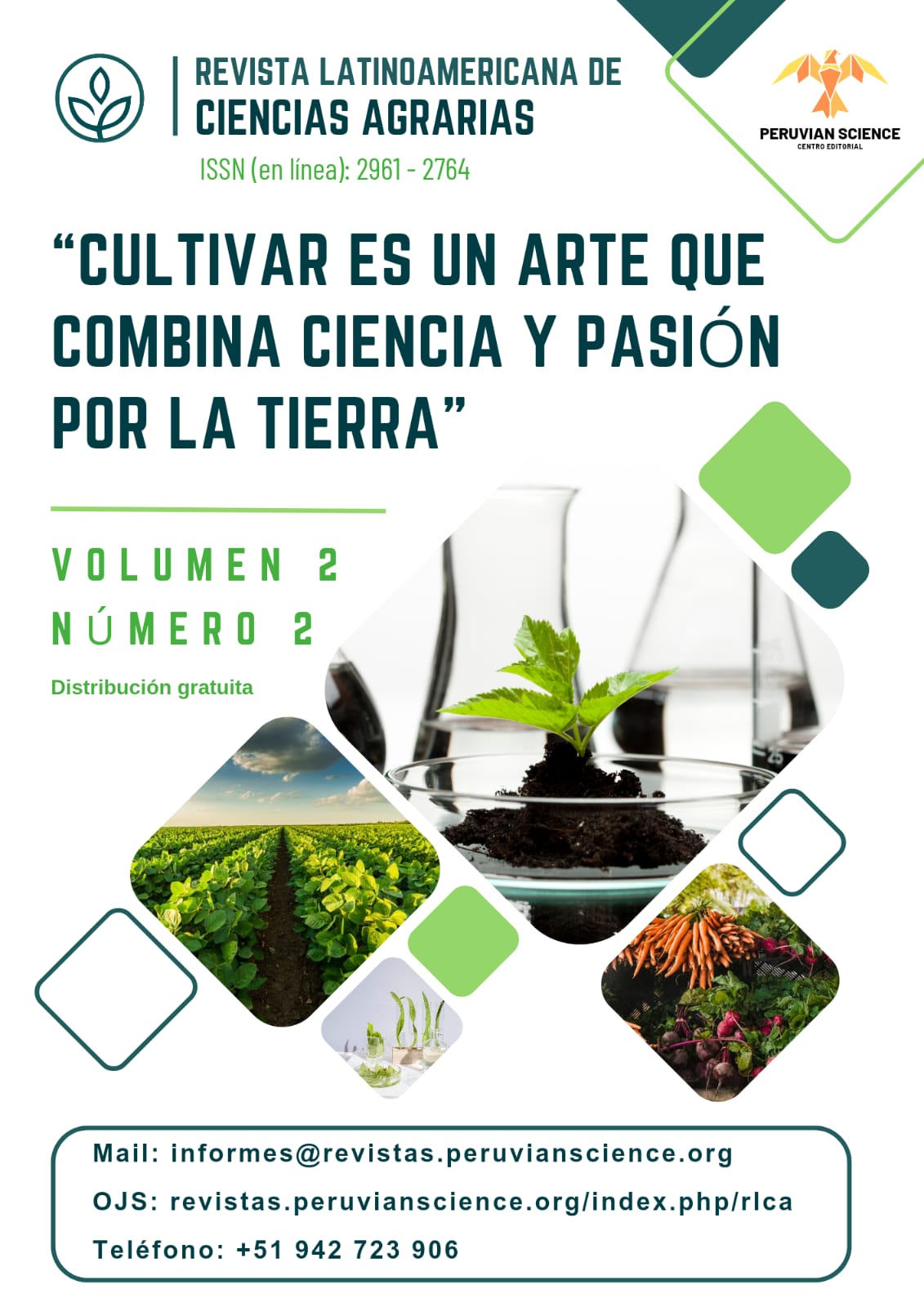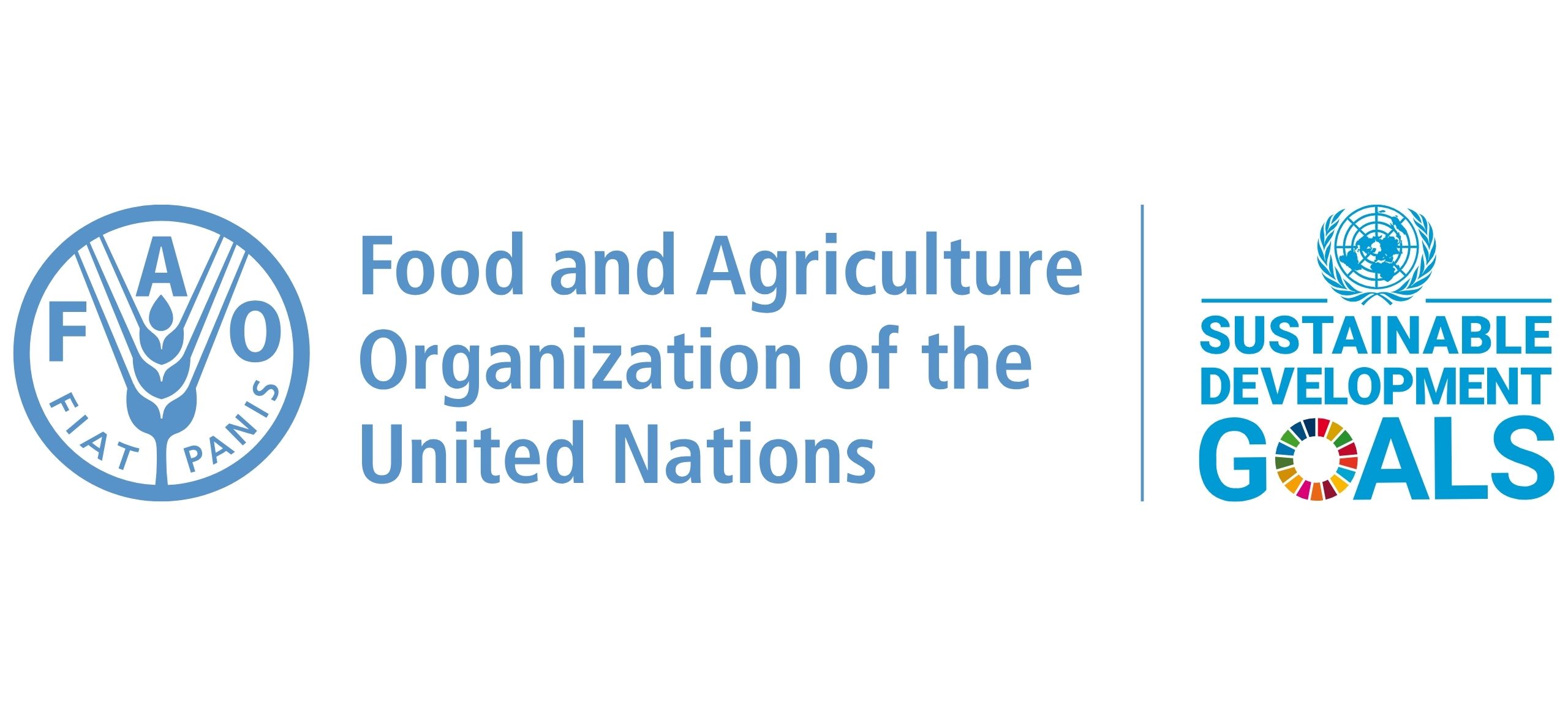Effect of different doses of Silicon in foliar application for corn (Zea mays L.) cultivation in the area of Mariscal Francisco Solano López – Caaguazú, Paraguay
DOI:
https://doi.org/10.5281/zenodo.14788452Keywords:
height, length, performanceAbstract
Silicon (Si) is a very important element for grasses and for this reason the present research aims to evaluate the effect of different progressive doses of silicon in corn crops. It was carried out in the city of Mariscal Francisco Solano López - Caaguazú, Paraguay; this region has a Rhodic Kandiudox soil that is characterized by high production potential given its excellent physical properties. For the development of the research, the completely randomized block design (CRBD) was used, 5 treatments with 4 repetitions were used, covering 20 experimental units, which were established within a total area of 663 m2. silicon was applied at the V8 phenological stage, via foliar, and the treatments were: T1: control, T2: 0.5 kg / ha, T3: 1.0 kg / ha, T4: 1.5 kg / ha, T5: 2.0 kg / ha. The variables evaluated were plant height, ear length, weight of 1000 seeds and final yield in kg/ha. The results were subjected to analysis of variance and compared by the Tukey test with a probability of error of 5%. According to the results, for plant height no significant differences were obtained, however, for ear length and weight of 1000 seeds a p-value less than 0.05 was obtained, thus indicating that there was a significant difference between the treatments; with respect to final yield a difference of 4.9% was obtained between T1 and T5.
Downloads
References
Botelho, D. M. S., Pozza, E. A., Pozza, A. A., Carvalho, J. G. D., Botelho, C. E., & Souza, P. E. D. (2005). Intensidade da cercosporiose em mudas de cafeeiro em função de fontes e doses de silício. Fitopatologia Brasileira, 30, 582-588. Disponible en: https://www.scielo.br/j/fb/a/D6MhLWtGQXpGYLVcK8GTgpC/?format=pdf&lang=pt
CAPECO (2024). Àrea de siembra, producción y rendimiento del maíz. Cámara Paraguaya de Exportadores y Comercializadores de Cereales y Oleaginosas. Recuperado el 23 de noviembre de 2024 de https://capeco.org.py/area-de-siembra-produccion-y- rendimiento/
Veas Parrales, K. R. (2020). Importancia del Silicio como acondicionador de suelos para la producción de cultivos de ciclo corto (Bachelor's thesis, BABAHOYO: UTB, 2020). Disponible en: http://dspace.utb.edu.ec/handle/49000/8198
Michajluk, J., Gómez, R., Moreno H., Leguizamón, C. & Cabello, J. (2019). Evaluación del contenido de silicio en suelo a través de técnicas analíticas nucleares. Universidad Nacional de Asunción. Disponible en: http://scielo.iics.una.py/pdf/ucsa/v6n3/2409-8752-ucsa-6-03-18.pdf
López, O., González, E., De Llamas, P., Molinas, A., Franco, S., García, S., & Ríos, E. (1995). Estudio de Reconocimiento de suelos, capacidad de uso de la tierra y propuesta de ordenamiento territorial preliminar de la Región Oriental del Paraguay. Asunción: MAG. Disponible en: https://www.geologiadelparaguay.com/Estudio-de-Reconocimiento-de-Suelos-Regi%C3%B3n-Oriental-Paraguay.pdf
(DINAC, 2024). DINAC (2018). Dirección de Meteorología e Hidrología. Disponible en: https://www.meteorologia.gov.py/
Martìnez Acosta, G. D. (2017). Efectos de la aplicación de silicio y fosfito de potacio en la variedad de arroz SFL-09 Oriza sativa L (Bachelor's thesis, Facultad de Ciencias Agrarias Universidad de Guayaquil). Disponible en: http://repositorio.ug.edu.ec/handle/redug/18029
Sánchez Dumes, N. C. (2018). Efecto de la aplicación de silicio y fertilización sobre el comportamiento agronómico del cultivo de maíz Zea mays L (Bachelor's thesis, Facultad de Ciencias Agrarias Universidad de Guayaquil). Disponible en: http://repositorio.ug.edu.ec/handle/redug/29001
Jiménez Franco, E. D. (2016). Evaluación de dosis y fuentes de silicio líquido aplicado foliarmente en el cultivo de maíz Zea mays L. (Bachelor's thesis, Facultad de Ciencias Agrarias Universidad de Guayaquil). Disponible en: https://repositorio.ug.edu.ec/items/1ed32a93-3bf8-443b-8116-d7b43fc84df6
Published
How to Cite
Issue
Section
License
Copyright (c) 2025 Latin American Journal of Agricultural Sciences - RLCA

This work is licensed under a Creative Commons Attribution-NonCommercial-NoDerivatives 4.0 International License.
The Latin American Journal of Agricultural Sciences (ISSN online: 2961-2764) applies the Creative Commons Attribution (CC BY) license to the articles and other works we publish. Therefore, each manuscript submitted for publication by the journal will be processed under the CC BY license. This means that the manuscript author retains copyright to their published documents while agreeing that their article may be reused in whole or in part by anyone for any purpose, free of charge, including for commercial purposes. The use of this license is consistent with the open access policy of the journal, since this is the most open license considered "the gold standard" of open access.




















